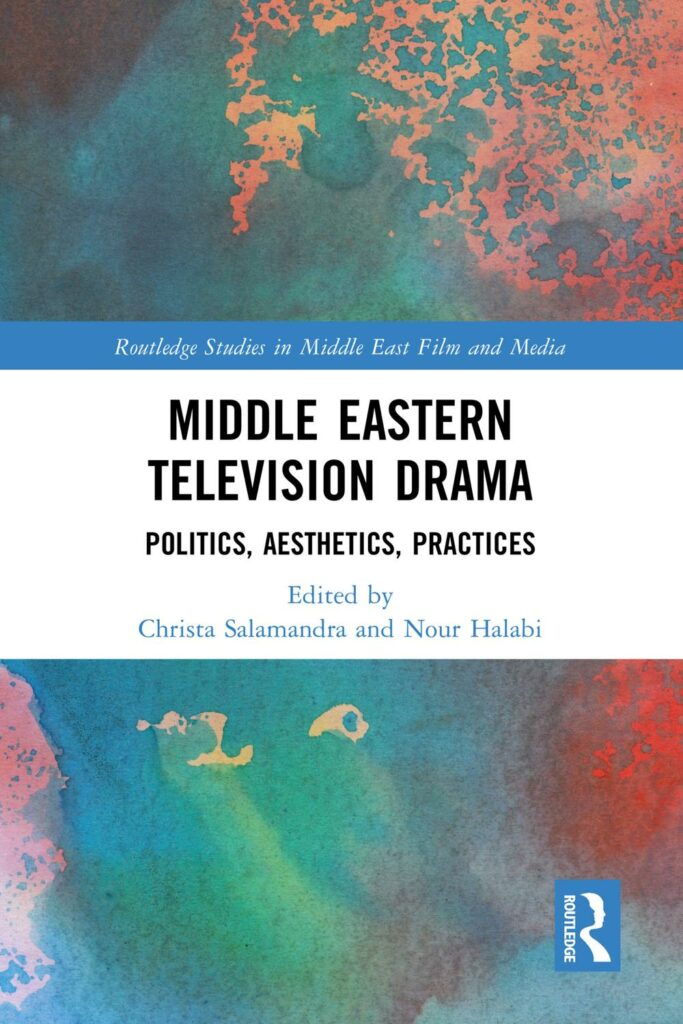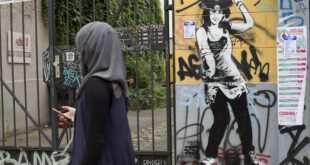Issue 36, Summer/Fall 2023
https://doi.org/10.70090/MB23BRME
Book Review: Middle Eastern Television Drama: Politics, Aesthetics, Practices
Christa Salamandra and Nour Halabi, Eds.
ISBN 9781032027814
190 Pages 12 B/W Illustrations
Published June 21, 2023
Routledge
Middle Eastern Television Drama: Politics, Aesthetics, Practices, edited by Christa Salamandra and Nour Halabi, scrutinizes the multifaceted narrative of television's sociopolitical engagement across the Middle East. In their introduction, Salamandra and Halabi articulate a compelling premise, emphasizing the significance of television drama as a vital medium for sociopolitical commentary in the Middle East. The nine chapters in the book present case studies from across the Middle East, which reveals that television goes beyond merely mirroring society to actively molding the cultural and political awareness of viewers. The dynamic role of the medium in navigating narratives of identity, power, and resistance is showcased through a diverse range of cases that extend from Turkey to Afghanistan.

Each chapter contributes a unique perspective and collectively articulates the intricate relationship between media and the diverse sociopolitical landscapes of the Middle East. Josh Carney's examination of Magnificent Century and Resurrection Ertuğrul offers an engaging analysis of Turkish television dramas while highlighting the contested terrain of national identity and historical/cultural memory. This exploration into Turkey's Ottoman past serves as a vivid illustration of the power of television as a battleground for cultural and political contestation. Carney's analysis sets a critical tone for understanding the broader implications of television drama in the construction and contestation of cultural narratives.
In Iran, the anthology dives into the strategic use of television during the Iran-Iraq War through Esha Momeni's examination of the television drama Ravayat-e Fath. This chapter examines the role of television in promoting narratives of martyrdom, serving state agendas, and shaping national identity. Similarly, Mehdi Semati and Nima Behroozi's exploration of Gando delves into the geopolitical imagination of Iranian television, reflecting on themes of national security, espionage, and the portrayal of the Islamic Revolutionary Guard Corps (IRGC). These two chapters demonstrate the capacity of television to function as a potent tool within contentious political landscapes while influencing public perception and ideological discourse.
The Egyptian context is richly explored through Walter Armbrust's critique of Al-Gama‘a and Gianluca P. Parolin's analysis of Kalabsh, which offer insights into television drama's participation in shaping public discourse around political upheavals and social movements. These analyses reveal the strategic deployment of television drama to frame narratives around social media activism, counterrevolutionary sentiments, and public perceptions of political entities and groups.
Nour Halabi’s investigation of Syrian television dramas, particularly al-Intizar and Zawal, alongside Christa Salamandra’s examination of temporal narratives, highlight the medium's engagement with urban inequality, political identity, and national history. Both Halabi and Salamandra, in their respective analysis’s, emphasize the role of television in critiquing societal issues and tensions while showcasing its capacity to reflect and engage with the complexities of Syrian society.
Arzu Öztürkmen's discussion on the global distribution of Turkish dizis (dramas) and Wazhmah Osman's analysis of Afghan television dramas post-9/11 further expand the volume’s scope. Öztürkmen's exploration of distribution strategies illuminates how Turkish dramas have achieved international success, transforming the global television landscape. Meanwhile, Osman's narrative on Afghan television's evolution amidst ongoing conflict highlights the resilience of media makers in creating content that reflects the realities of war while fostering cultural progress and sociopolitical commentary.
The anthology offers a detailed overview of the sociopolitical engagement of television dramas across the Middle East, while also highlighting the opportunities for additional research and exploration. Future editions of the anthology could be significantly strengthened by incorporating more regional diversity in case studies and expanding the geographical scope to include underrepresented areas within the Middle East. Such an expansion would not only enrich the analysis but also offer a more nuanced understanding of the diverse cultural and political contexts that shape television drama in the region.
Moreover, a deeper focus on audience reception studies in large subregions of the Middle East could provide invaluable insights into how television content is received and interpreted by different audiences. This emphasis on audience reception is crucial for understanding the impact of television dramas beyond their production and would shed light on the complex dynamics of viewer engagement, interpretation, and the social ramifications of televised narratives.
The anthology’s interdisciplinary approach and thorough analysis make it an important tool for scholars, students, and enthusiasts who wish to explore the confluence of media, politics, and culture in the region. The collection emphasizes the capacity for television dramas to influence sociopolitical discourse, which encourages additional scholarly exploration into the intricate narratives that both mirror and influence Middle Eastern societies. The call for an expanded exploration of the region's diversity, production techniques, and audience interactions opens new avenues for research. This volume sets a foundational benchmark for future investigations into the ever-evolving landscape of television in the Middle East, which marks it as a pivotal addition to the field.
 Arab Media & Society The Arab Media Hub
Arab Media & Society The Arab Media Hub





